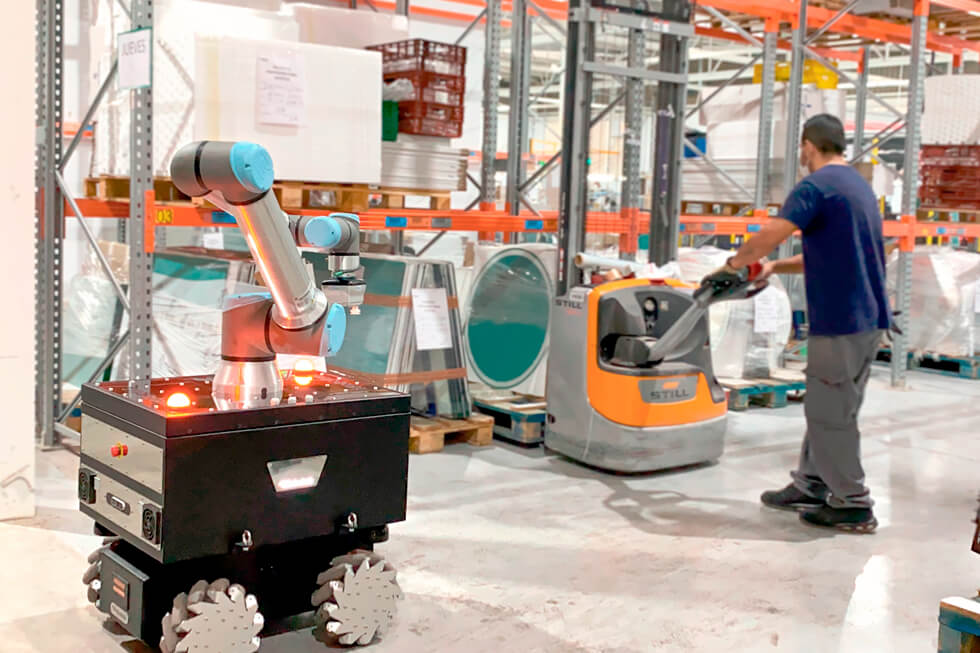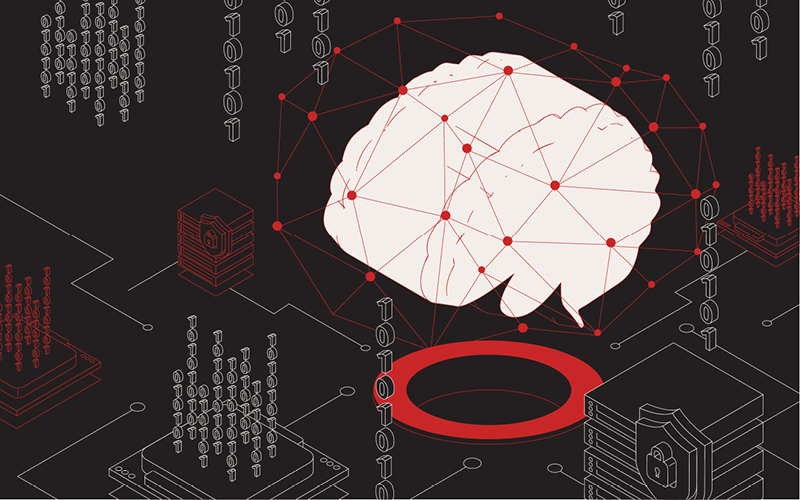Among the latest technological advances, artificial intelligence (AI) and machine learning have become increasingly significant. The transformative capacity they bring with them is notorious in different fields, and one example of this is robotics. Machine learning robots are changing the way machines interact with their environment, acquiring knowledge and adapting to new situations. This article explores several trending topics in the technology sector such as machine learning robots, their relationship with deep learning, the intersection of robotics and machine learning, as well as the differences between artificial intelligence and machine learning.
MACHINE LEARNING ROBOT: DEFINITION AND FUNCTIONS
Machine Learning is a sub-discipline within Artificial Intelligence that allows a computer to identify behaviour patterns within a massive amount of data and develop predictive analytics, improving the experience.
To provide a simple example that shows how machine learning works, we can consider the one applied by streaming platforms: it is based on user behaviour for future recommendations of audiovisual content. The platform’s recommendations are not static but adapt as the user’s preferences change.
A machine learning robot is a type of robot that includes these machine learning techniques to acquire knowledge and improve its responsiveness, based on what it learns. These robots are designed to collect data from their environment using a variety of sensors, process the information and adjust their behaviour based on the data collected, greatly extending their autonomy.
The machine learning process allows robots to recognise patterns that help them understand their environment and perform specific tasks more efficiently by applying what they learn. By using machine learning algorithms, robots can learn autonomously without requiring specific programming for each task.
DEEP LEARNING AND MACHINE LEARNING ROBOTS
In technical terms, deep learning is a model within machine learning that is of particular interest to the robotics sector. This model is based on layered algorithms known as artificial neural networks, imitating the functioning of the human brain for data processing.
These neural networks allow deep learning robots to process complex data, extract meaningful characteristics, assess whether the prediction it is making is accurate or not, and thus make more accurate decisions.
In short, the development of deep learning algorithms aims to make them increasingly efficient with less human supervision.
Thus, the ability of robots to identify objects, recognise speech and understand natural language is driven by deep learning techniques.
MACHINE LEARNING AND ROBOTICS
The intersection of robotics and machine learning introduces new possibilities for the autonomy of mobile robots and for the intelligence of their task execution. Machine learning robots are being used in a wide range of applications, from inspection and maintenance or surveillance to manufacturing and healthcare.
Surveillance functions that a mobile robot is able to perform efficiently (such as maintenance rounds in an infrastructure), reach higher levels of accuracy and anticipation thanks to machine learning algorithms.
In the manufacturing industry, machine learning robots can improve the efficiency and accuracy of production processes by learning to perform complex tasks more quickly and accurately. In healthcare, we can already see the value they bring by assisting in surgeries, making accurate diagnoses or providing personalised patient care.

WHAT IS THE DIFFERENCE BETWEEN AI AND MACHINE LEARNING?
The main difference between artificial intelligence and machine learning lies in their focus and application.
Artificial intelligence seeks to develop systems capable of performing tasks that require human intelligence, such as speech recognition, decision making and natural language understanding. Moreover, AI works with structured data as well as semi-structured and unstructured data.
Machine learning, on the other hand, focuses on teaching machines to learn from data, improving their performance as they acquire more information. Instead of explicitly programming each step, machine learning allows robots to adapt and improve their behaviour autonomously. Deep learning only works with structured or semi-structured data.
In summary, artificial intelligence is a broad field that involves a variety of techniques and approaches, while machine learning is a specific technique used to train machines to learn and improve their accuracy from experience.
WHICH IS BETTER, ARTIFICIAL INTELLIGENCE OR MACHINE LEARNING?
The question of which is better, artificial intelligence or machine learning, is not a simple one to answer. Artificial intelligence is a broader field that covers a variety of techniques, including machine learning. While artificial intelligence focuses on creating systems that mimic human intelligence in a general way, machine learning focuses on teaching machines to learn from experience and improve from data.
Artificial intelligence is the broader, more aspirational concept, while machine learning is a specific technique within artificial intelligence that has proven to be very effective in a variety of applications. In short, machine learning is a powerful tool used in the field of artificial intelligence.
CONCLUSION
Machine learning robots are changing the way humans interact with technology and also the way technology interacts with the world around it. These robots use machine learning skills to acquire knowledge and improve their performance over time. The field of Artificial Intelligence includes deep learning, as a branch of machine learning, which further boosts the capabilities of these robots by enabling them to process complex data and recognise meaningful patterns.
While artificial intelligence and machine learning are related concepts, machine learning is a specific technique within the broader field of artificial intelligence.
Finally, machine learning robots demonstrate the power of combining robotics and machine learning to create machines that are more intelligent, adaptive and ultimately useful to humans.


